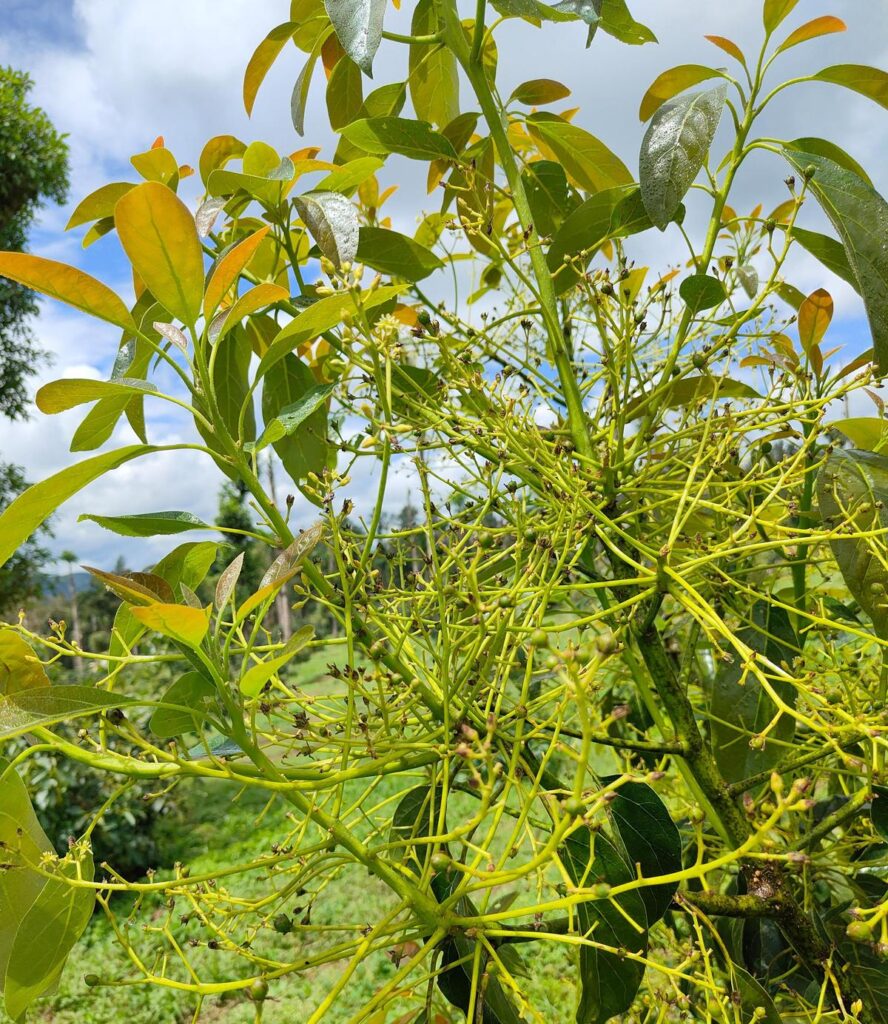Westfalia Fruit is joining hands with farmers in the Western Ghats to grow Hass avocados locally. We visit a farm in Kodagu to know more about this beloved fruit and its many uses

The avocado fruit on the tree
In 1925, an humble American mailman named Rudolph Gustav Hass put down all his life savings to buy a piece of land in California. There, he embarked on a horticultural adventure, planting many varieties of avocados trees and grafting together the different cultivars. After a lot of trial and error, a new fruit was born that was larger and creamier. It became so popular that Hass patented it in 1935. Today, the Hass avocado reigns supreme; a trending ingredient online, a millennial darling and a celebrity-endorsed breakfast staple.
In India, their growing presence on cafe menus and their nutritional value have made them much sought-after. But these coveted fruits remain a luxury. Currently most Hass avocados we get in India are imported from Tanzania, and some from Peru and Australia. A solution to make them more accessible may be right around the corner. Westfalia Fruit, a 75-year-old avocado company from South Africa, is joining hands with farmers and plantation owners in the Western Ghats to grow these varieties locally. I find out more at a Tata coffee farm in Kodagu.

The avocado nursery in Coorg
The weather is delightful as a group of us arrive at the farm. This particular 50-acre plot is a model nursery. More than cultivation, the focus here is on experimenting for environmental factors, grafting, soil quality, fertilising techniques and other elements. The Westfalia team greet us with fresh and delicious avocado milkshakes, as we learn more about the fruit. General manager Ajay TG and South Africa-based farm consultant Cecil Hackney teach us more about the fruit, how it is grown, and its varieties.
What are Hass avocados, and how are they different from butter fruit?
To south Indians, the hooha over avocados in the mid-2010s was baffling. We have always had our butter fruit milkshakes in local juice shops, and the fruit can easily be purchased in grocery stores. Although this was not the case in the northern parts of the country. However, there is actually a difference between the local variety of butter fruit and Hass avocados.
Originally hailing from Central America, the avocado fruit has been consumed for 9,000 to 10,000 years now. Butter fruit has a thin green skin, and a larger pit. It also does not ripen consistently and tastes less sweet. The Hass has more flesh, has a longer shelf life, is creamier and sweet, and has a dark black exterior. These also have a fat content of around 12 percent, making them tastier. Originally Westfalia tried to grow the indigenous variety, but it was not conducive to long distance transportation and exports, hence they decided to go with Hass. We take a leisurely walk through the nursery, getting glimpses of avo flowers, and fresh fruits on the trees.

A walk through the coffee and avocado plantation
Crop diversification in Western Ghats
The next morning, we visit a farm where the fruits are actually cultivated. The fruit trees grow among the coffee shrubs and pepper vines in this 300-400 acre of plantation. Over the region of Coorg, Wayanad, and Nilgiris Westfalia has partnered with many coffee farms. The climate needed for these plants are similar, and hence they grow in harmony on the same farms.
Farmers and coffee growers in the Kodagu region have been suffering due to unpredictable weather patterns and fluctuating prices. In such a situation, crop diversification comes to the rescue. It benefits the coffee plantations in the Western Ghats to mixed avocado trees in the land. By growing the fruits locally in India, the aim is to reduce costs and make it more easily available in not just tier one, but also tier two and tier three cities in India.
What can we use these fruits for?
All these lessons made us hungry for avocados. And the team had a feast prepared to showcase the many different uses of the fruit. Studies show that avocados have “good fats” and help lower cholesterol levels. They are also high in many vitamins. Avocado on toast and guacamole are the most common uses of avocado. But we were introduced to many other recipes. The dry fruit smoothie I had was a perfect start to the day. The avo ice cream was super creamy and delicious. And the salads and canapes made for great appetisers. I also learnt that one can also bake with avocado, because it is a good replacement for butter. We sampled avocado oil, made with the flesh of the fruit, that is high in vitamin E. The oil has a high smoke point so it is good for sauteing, and can also be used in skincare.

So will reduced costs and versatility make Indians adopt avocados as much as we have many other non-native fruits and vegetables? The potential for avocado cultivation in South India is significant, but the question remains whether India can successfully cultivate avocados on a large scale into the mainstream.
The author was at the farm by invitation from Westfalia Fruit
source: http://www.thehindu.com / The Hindu / Home> Food> Features / by Anagha Maareesha / December 18th, 2024

